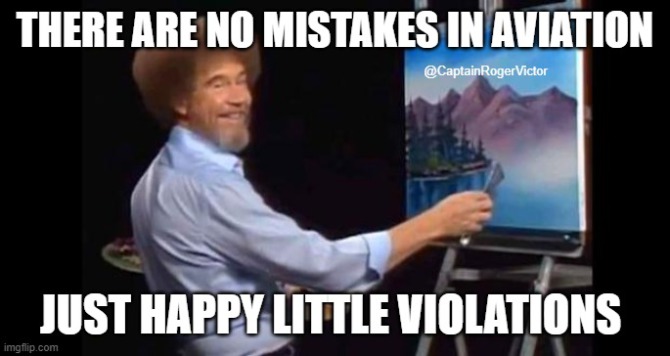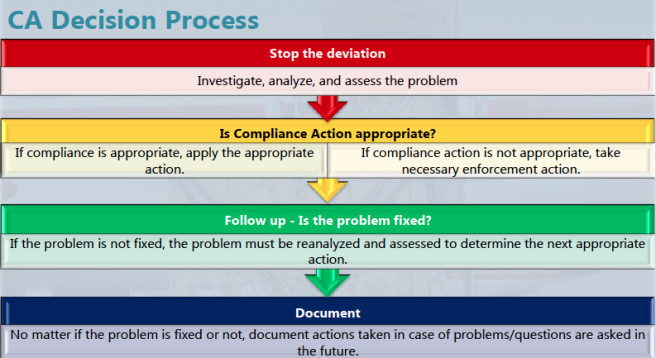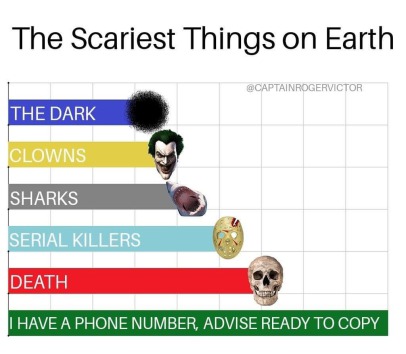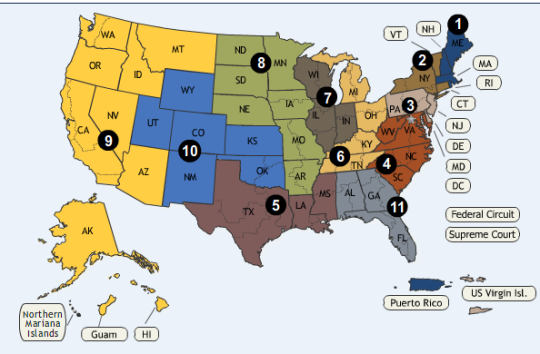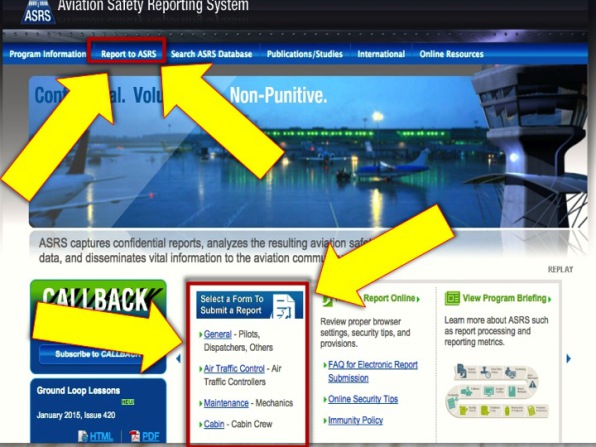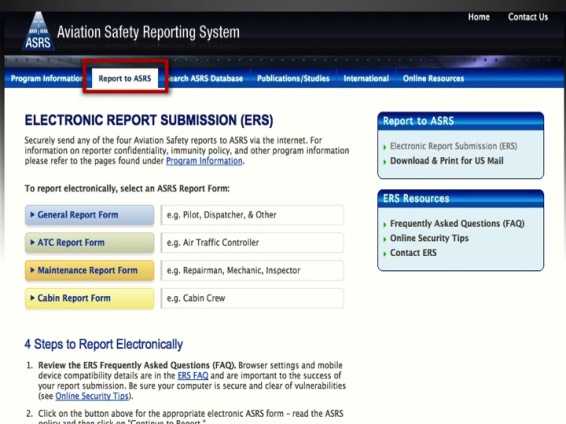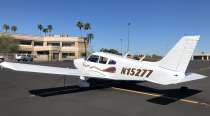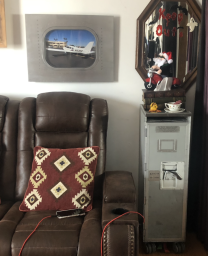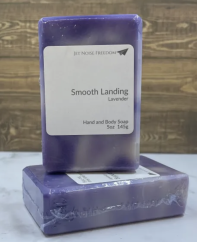
FAA Enforcement
Articles from AOPA legal Counsel
Kathy Yodice - AOPA Pilot Protection Services - articles that further explain the FARs
AOPA Pilot Protection Services
Mike Yodice - AOPA Pilot Protection Services
Are you really good to go if FAR 91.403(a) doesn't say so?
Ron Golden - AOPA Pilot Protection Services - Articles
AOPA Pilot Protection Services
FAA’s Compliance Philosophy
As of September 3, 2015, policy on non-enforcement responses to deviations is now the responsibility of FAA program offices.
Except as described in the FAA’s Compliance Philosophy or as required by law and specific program commitments, where older AFS policy conflicts with the new Compliance Philosophy this newer policy shall be followed until the older policy is revised.
The use of Compliance Action should be considered the initial means of addressing all alleged, suspected, or identified instances of noncompliance with a rule or deviations from standards or procedures until a determination is made that Compliance Action is not appropriate.
If a deviation does not involve intentional, reckless or criminal behavior and the airman/organization is qualified and willing to cooperate, AFS will resolve the issue through use of compliance tools, techniques, concepts, and programs.
Compliance Action is a new term to describe the FAA’s collection of non-enforcement methods to correct unintentional deviations or noncompliance that arise from factors such as flawed systems and procedures, simple mistakes, lack of understanding, or diminished skills. It involves open and transparent safety information sharing between the FAA and airmen/organizations. Its purpose is to restore compliance and to identify and correct any underlying cause(s) that led to the deviation.
AFS personnel may use Compliance Action to engage regulated persons to adopt practices of a non-regulatory nature by making recommendations and suggestions to improve their operations. These recommendations must always be prominently identified as non-regulatory.
Legal Enforcement is an appropriate tool to address unacceptable behavior and negative safety performance.
AFS personnel will no longer use the Enforcement Decision Process (EDP) to determine the action to take for noncompliance with regulatory standards.
Compliance, Administrative and Legal Enforcement Action decisions are focused on observable airman/organization behaviors.
Definitions
Compliance Action: An action taken by AFS personnel to correct an airman/organization deviation from standards when the deviation was not a result of intentional, reckless, or criminal behavior, or a pattern of negative behaviors or performance. Compliance Action does not relate to the approval, denial, suspension, modification, or revocation of a covered certificate
Corrective Action: Action taken by airmen/organizations to correct a noncompliance with a rule or deviations from standards or procedures, and to mitigate hazards/risks
Voluntary Compliance: Civil aviation safety depends on voluntary adherence to legal requirements. Therefore, the FAA administers programs to promote a clear awareness and understanding of the governing statute and regulations
Compliance Actions Education: Personnel are encouraged, during their oversight activities, to strengthen an airman/organization’s understanding of the regulation(s) and associated risks. The FAA also promotes education through public awareness programs and other aviation educational efforts
On-the-Spot: Corrective action completed immediately when a deviation from statutory or regulatory standards is identified by the FAA and communicated to an individual or company
Additional Training: Individuals remediated through their organization’s approved training program, through another required training program for their job function or work environment (such as carrier employees receiving SIDA or ramp driver training from the airport), or the FAASTeam Remedial Training process. Requires coordination with the FAASTeam and/or Principal Inspector (PI)/Certificate Holding District Office (CHDO)
Remedial Training: A program authorized and described in Notice N8900.RT that AFS inspectors use for certificated airmen when remedial training is the appropriate action to take for a deviation from statutory or regulatory standards
Counseling: Oral or written counseling of airmen, organizations, or non-certificated National Airspace System (NAS) participants, for a safety concern or a deviation from statutory or regulatory standards
Actions for Organizations: Improvements to systems, procedures, operating practices or training programs. Requires coordination with the Principal Inspector (PI)/ Certificate Holding District Office (CHDO)
Federal Aviation Administration Compliance Philosophy - 8000-373B
Remedial Training
Remedial training, as outlined in Notice N8900.RT, may not be utilized by an airman who was using his or her certificate in air carrier operations (as defined in that notice) at the time of the apparent deviation.
Those airmen should be remediated through their organization’s approved training program. (see Vol. 14, Chapter 3, Section 2, for additional information)
CA Decision Process
Background
Personnel will no longer use the Enforcement Decision Process (EDP) to determine the action to take for noncompliance with regulatory standards.
Nearly all regulations address situations with the potential for significant damage or harm. The objective of most regulations is to reduce the likelihood of the hazard(s) resulting in injurious consequences – an accident. In this respect, the FAA defines the “acceptable level,” of risk in terms of the specifications in the rule. If the specifications are not met, the level of risk must be assumed to be uncontrolled and, therefore, unmitigated.
The primary objective of action at this point, then, is to return the risk to the intended level of control – to regain compliance.
In determining the action taken to return risk to effective control (i.e. compliance), the prime consideration is not the degree of potential harm associated with the situation since nearly all regulations address situations, which if not effectively controlled, present the potential for significant harm. The key objectives are to understand the risk and factors underlying the breakdown of the controls, and determine the action that has the greatest potential for addressing the problem.
In this respect, the willingness and ability of either individual or organizational NAS participants to actively participate in risk control actions is a key element of compliance action strategy. Diligent actions taken by a willing, capable participant to restore compliance equates to reducing the likelihood of a future event. Conversely, where the individual or organization is unwilling or incapable of effective action, we have to assume that the likelihood of such future events remains unmitigated and stronger action on the part of FAA may be necessary.
Microsoft Power Point presentation [3.1 MB]
Adobe Acrobat document [1.2 MB]
Microsoft Word document [139.1 KB]
Adobe Acrobat document [19.0 MB]
Adobe Acrobat document [884.5 KB]
Adobe Acrobat document [5.0 MB]
Brasher Notification - "N12345, possible pilot deviation"
Results of an FAA Investigation
- Nothing happens
- Oral/written counseling
- Criminal action
- Administrative action
warning notice or
letter of correction
remedial training
- Request for reexamination
709 check - request for reexam under 49 USC 44709(a)
by FAA Inspector (request must be reasonable AND reexam is limited to reason for request
request to change inspector or FSDO
airman should get prior training and log it
failure/refusal to submit leads to emergency order of suspension
successful reexam does not bar subsequent certificate action
- Legal enforcement action (3 different letters)
1. Letter of Investigation (LOI): from an FAA Inspector (must be timely)
notification must state:
- response is not legally required
- no adverse inference if no response made
- must warn that response may be used in evidence against airman
- FAA EIR and ATC data will be available
2. Notice of Proposed Certificate Action (NPCA): from an FAA lawyer
- offers series of options including informal conference (statutory right to be heard) via telephone or in person
- EIR needed before conference to fairly prepare
or Notice of Proposed Civil Penalty (NPCP): from an FAA lawyer
3. Order of Suspension, Revocation, or Civil Penalty: from an FAA lawyer
(all are usually sent by certified AND regular mail)
Not emergency cases:
- appeal deadline 20 days from time of service (NTSB Rule 821.30, Rule 7 "mailing date"
- no good cause for late filing if bad address on file with FAA (Mazufri) or travelling (Warfel)
- filing an appeal stays effectiveness of Order (except in emergency cases) but if no appeal taken to NTSB then certificate must be surrendered iaw FAA Order and failure to surrender will lead to civil penalty ($5,000 - Reid and Ashmore)
- FAA will then file Order as Complaint
- Answer to FAA Complaint due 20 days after served - Rule 31(c) - include affirmative defenses (emergency, ASRP immunity, controller error, reasonable reliance, stale complaint, laches, PBR non compliance) - give judges conflicting hearing dates and choice of location for hearing - failure to answer deemed admission - can amend within 15 days
Emergency Certificate Actions
- emergency order is effective immediately (NTSB appeal DOES NOT automatically stay effectiveness)
if FAA advises NTSB "that an emergency exists and safety in air commerce or air transportation requires the order to be effective immediately"
- by statute, NTSB must dispose of appeal in 60 days (pleadings, discovery, ALJ hearing, initial decision, appeal to board, decision and service)
emergency procedures may be waived
- Hoover Law (eff. 4-6-2000): permits review by NTSB of FAA's unilateral determination that an emergency exists (amends 49 USC 44709) - petition for review must be requested not later than 48 hours after order "received" by airman of FAA's emergency order - NTSB must dispose of petition within 5 days - if Board finds that emergency does not exist then the order "shall" be stayed - NTSB final rule 54
- Rule 54, Review of FAA determination: Time to petition for review is 2 days after "receipt" of order and may enumerate reasons - send petition by overnight delivery or fax - FAA may reply within 2 days - no hearing just paper review by Chief Judge who may solicit additional information - standard of review is "emergency determination was appropriate under the circumstances" - judge must assume truth of FAA allegations - to date less than 5% prevail and many are dismissed procedurally - no appeal of Chief Judge's decision to Full Board
FAA Order 2150.3C with latest changes
Stale Complaint: Rule 33
- 6 months to NPCA not LOI not Order (lost/delayed mail, inability to pick up at post office)
- exceptions: lack of qualifications (revocation) or good cause (FAA learns late, diligence - Ramaprakash)
- equitable laches available if actual prejudice shown - Manin
- distinguished from 5 year SOL - Broska
Pre-Trial Considerations
- Motion for Summary Judgment: Rule 17
- Discovery: Rule 19 - EIR and ATC data should have been obtained - FRCP "to the extent practicable" - request for sanctions for non-compliance requires prior motion and order to compel - available in emergency cases
- All current judges use pre-trial orders though not required - sanctions for non-compliance
Hearing
- Setting: Rule 37(a) - should be 30 days notice
- Location: set according to Rule 37 factors
- Continuances: make request early
- Subpoena and sequestration of witnesses: 49 CFR Part 9 for calling current or former DOT employees
- Burden of Proof: on FAA - preponderance of substantial, reliable, and probative evidence
- Prima Facie case: but for 14 CFR 91.13 - Lindstam doctrine per Stepovich "the Administrator need not allege or prove specific acts of carelessness to support a violation of section 91.9 (now 91.13). Instead, using circumstantial evidence, she may establish a prima facie case by creating a reasonable inference that the event would not have occurred but for carelessness on respondent's part. The burden then shifts to respondent to come forward with an alternative explanation for the event sufficient to cast reasonable doubt on (ie overcome inference of) the Administrator's claim of carelessness."
- Respondent as witness for FAA: DISCOURAGED!!!
- Initial decision: usually from bench - respondent provided FREE transcript
Rules of Evidence
- PBR: FRE "to the extent practicable"
- but judge granted wide latitude - rulings reviewable only for an abuse of discretion or prejudicial error - Lackey and Ferguson
- hearsay and multiple hearsay INADMISSIBLE per PBR unless FRE exception
ALJ Credibility Determinations
"the only standard of review in resolving credibility issues" is that the Board will henceforth defer "to a law judge's credibility findings absent a determination that such findings are arbitrary and capricious" - Porco
Sanction
NTSB no longer statutorily bound by "all validly adopted interpretations of ... written agency policy guidance available to the public related to sanctions" unless arbitrary, capricious, or otherwise not iaw law
Not bound by regular "Chevron" type deference - Perez
Judges may now be more free to determine sanction, so respondents should argue mitigating factors, FAA will argue aggravating factors
Interpretative Rules
US Dept of Labor case - Supreme Court - interpretative rules do not have the force and effect of law - Perez v Mortgage Bankers Association (March 2015)
Appeal to Full Board
Rule 47: Notice of appeal due within 10 days
Rule 48(a): Appeal briefs due within 50 days of oral initial decision OR 30 days of written decision except for "good cause"
Extension of time - request within same timing - unopposed up to 2 requests - routinely granted
Rule 49: issues on appeal must have been raised below
Prosecutorial discretion not reviewed
Credibility of witnesses: Wedding, Andrzejewski, Porco
Late-filed Notices and Briefs
"The Board intends to adhere uniformly to a policy requiring the dismissal, absent a showing of good cause, of all appeals in which timely notices of appeal, timely appeal briefs or timely extension requests to submit those documents haven't been filed." Hooper (1998)
Appeal to US District Court
Standard of review is "full independent review of a denial, suspension, or revocation . . . including substantive independent and expedited review of any decision of the Administrator to make such order effective immediately"
Court's review includes evidence of record before the FAA and record before the NTSB
Appeal to US Court of Appeals
Rule 64(b): request NTSB for stay pending Court's review within 30 days
- revocation usually NO
- suspension less than 6 months on case by case basis
- scope of review by Court:
factual - substantial evidence rule
legal - reviewed de novo with deference
sanction - deference
- FAA may appeal "significant adverse impact"
FSDO - Flight Standards District Office - Scottsdale, Arizona
QAR - Quality Assurance Program
TFR - Temporary Flight Restrictions
NATA - National Air Transportation Association
CAP - Civil Air Patrol
FBO - Fixed Base Operator
CAF - Commemorative Air Force
LOI - Letter of Investigation
ASRP - Aviation Safety Reporting Program
ASAP - Aviation Safety Action Program
ATSAP - Air Traffic Safety Action Program
ERC - Event Review Committee
NOPCA - Notice of Proposed Certificate Action
EAJA - Equal Access to Justice Act
What to do if stopped by law enforcement - AOPA guideline
FAA civil penalty decisions and other resources
IATSBA: International Air & Transportation Safety Bar Association for info concerning practice before the NTSB
LPBA: Lawyer Pilots Bar Association for aviation law related articles
NTIS: National Technical Information Service – for NTSB bound volumes of decisions in safety enforcement cases and monthly issues of NTSB judges’ decisions
VDRP: Voluntary Disclosure Reporting Program
Adobe Acrobat document [149.7 KB]
AC 120-82 Flight Operational Quality Assurance
AC 120-66B Aviation Safety Action Program
FAA Order 1350.15B Records, Organization, Transfer, and Destruction Standards
FAA Order 1270.1A Freedom of Information Act Program (FOIA)
FAA Order 1600.38G Employee and Other Internal Security Investigations
FAA Order 1370.121A - FAA Information Security and Privacy Program & Policy
FAA Order 1600.75 Protecting Sensitive Unclassified Information
FAA Order 2300.2A Employee Indemnification Policy and Procedures
FAA Order 8020.11D Aircraft Accident and Incident Notification, Investigation, and Reporting
Preparation of FAA Form 2150-5, Enforcement Investigative Report (EIR)
FAA Form 8060-10A Airman Notice and Right to Receive Copy - FAA Records (PRIA)
Advance Notice of Proposed Rulemaking 75 FR 80452 December 22, 2010 - Rules of Practice in Air Safety Proceedings and Implementing the Equal Access to Justice Act of 1980
Notice of Proposed Rulemaking 77 FR 6760 February 9, 2012
Final Rule and interim final rule 77 FR 63242 and 63245 October 16, 2012
Final Rule 78 FR 57527 September 19, 2013
Notice pertaining to emergency cases 78 FR 57602 September 19, 2013 withdrawn 79 FR 41668 July 17, 2014
8900.195 August 8, 2012 - Requirements for Written Notification During Investigations of Airman Certificate Holders or Applicants
FAA General Inspector Manual - 8900.1
77 FR 52107 August 28, 2012 - How and where to request air traffic data from government contractors with the assistance of the FAA
80 FR 2776 January 20, 2015 - Requests for data should be directed to the FAA inspector who provided the written notice of investigation
NTSB hearings: conducted "to the extent practicable" iaw FRCP and FRE
Adobe Acrobat document [217.4 KB]
Adobe Acrobat document [219.4 KB]
Adobe Acrobat document [3.9 MB]
Adobe Acrobat document [2.3 MB]
Adobe Acrobat document [4.2 MB]
Adobe Acrobat document [15.9 MB]
Adobe Acrobat document [4.8 MB]
Adobe Acrobat document [4.8 MB]
NTSB Directory of Pertinent Employees in Legal Offices
NTSB Law Judge Circuit Assignments (map)
NTSB Informational Memo – Effect of Pilot’s Bill of Rights
NTSB Office of Judges Case Processing Tips and Other Pertinent Information
NTSB Office of Judges Submission of Documents for Aviation Certificate Enforcement Cases
Adobe Acrobat document [328.2 KB]
- With respect to procedural rules, the rules contained in 49 CFR 821 B will be analogous to local rules as referenced in FRCP. To the extent the timelines for filing or responding, as well as procedural processes such as for discovery or subpoenas, differ slightly from the FRCP, the local rules will be followed. For situations not covered by specific NTSB rule, FRCP will be followed to the extent they are consistent with sound administrative practice
- Full NTSB will defer to judge's conduct and rulings on procedural issues unless shown to prejudice party's ability to fairly present evidence at hearing
Administrator v Coats NTSB Order EA-5710 (2014)
Administrator v Rigues NTSB Order EA-5666 (2013)
- FRE clearly excludes hearsay evidence unless an FRE exception applies - NTSB must apply FRE to the extent practicable
Administrator v Rigues NTSB Order EA-5666 (2013)
- FAA Administrator required to provide "timely, written notification to an individual who is the subject of an FAA investigation relating to the approval, denial, suspension, modification, or revocation of an airman certificate under 49 USC 447
Timely: as yet to be defined
Required notification must include:
1. nature of investigation
2. notice that an oral or written response to a Letter of Investigation (LOI) from the FAA is not required
3. notice that no action or adverse inference can be taken against the individual for declining to respond to the LOI
4. notice that any response to an LOI or any other FAA inquiry may be used in evidence against the individual
5. notice that releasable portion of FAA's investigative report will be available to individual
6. notice that individual is entitled to access and to obtain air traffic data that would facilitate individual's ability to productively participate in a proceeding - data includes relevant air traffic communications tapes, radar information, air traffic controller statements, flight data, investigative reports, and any other data that would be helpful to individual
FAA takes a more sensible approach to first-time, inadvertent TFR violations
Adobe Acrobat document [104.3 KB]
PDF File [174.0 KB]
Adobe Acrobat document [1.5 MB]
Timeliness of notification: Administrator v Siwarski NTSB Order EA-5729 (2014)
PDF File [130.6 KB]
Access to air data: individual is entitled to any air traffic data from a “government contractor that provides operational services to the FAA, including control towers and flight service stations.” Previously the issue was Leidos (formerly Lockheed Martin) is not the government and not bound by the FOIA
Requests MUST be “expeditiously received” because data “is destroyed or otherwise disposed of within a few days or weeks after it is generated.” – requests MUST be detailed!
Typically format of data is in executable files, CDs, paper
Occasionally, information may only be viewed on FAA Air Traffic Organization (ATO) equipment with appropriate replay program usually at FAA facility – for those cases the FSDO should arrange with the airman and appropriate ATO personnel to facilitate a review of the data on ATO equipment
Unless an emergency exists the FAA may not proceed against an individual during the 30-day period from the date on which the air traffic data is made available to the individual – FAA currently interprets this to only affect processing of a case by FAA legal counsel!
Administrator v Michael NTSB Order SE-19457 (2013) – NTSB ALJ rules that FAA’s failure to abide by the time requirement was a jurisdictional defect
Administrator v Wilcox NTSB Order SE-19598 (2014) – NTSB ALJ in contrast ruled that time requirement was not violated and declined to dismiss the matter
NTSB motion to dismiss if FAA failed to provide releasable portions of FAA’s Enforcement Investigative Report (EIR) “with its required notification.” – However FAA contends that they do not have to release the EIR with LOI, but only to advise of availability of EIR… to compromise the NTSB which only has jurisdiction after a matter has been docketed on appeal, provides that the FAA must provide EIR by the time the FAA serves its complaint on the pilot.
14 CFR 821.19(d) – failure to provide copy of releasable portion of EIR
(d) Failure to provide or preserve evidence. The failure of any party to comply with a law judge’s order compelling discovery, or to cooperate with a timely request for the preservation of evidence, may result in a negative inference against that party with respect to the matter sought and not provided or preserved, a preclusion order, dismissal or other relief deemed appropriate by the law judge.
Administrator v Horna NTSB Order EA-5720 (2014) – NTSB applied standard of actual prejudice – found no prejudice since respondent had access to documents by reason of his position at company
PDF File [92.2 KB]
Administrator v Gundersen NTSB Order EA-5735 (2014) – Motion to dismiss denied as it was unclear what airman was entitled to, what he did not get, and failure to articulate prejudice from judge’s ruling
PDF File [58.8 KB]
NTSB no longer statutorily bound by interpretations adopted by FAA of laws and regulations as well as agency policy guidance related to sanctions – hence relaxation of mandatory deference
Martin v OSHRC – instructive in clarifying the extent of administrative agency deference to accord
Administrator v Jones NTSB Order EA-5647 (2013)
PDF File [169.7 KB]
Administrator v McGuire NTSB Order EA-5736 (2014) NTSB Order EA-5742 (2015)
Must bring factors with support to ALJs especially wrt sanction
PDF File [127.0 KB]
PDF File [11.7 KB]
Appeals to US District Court: standard of review shall be a “full independent review… including substantive independent and expedited review of any decision by the Administrator to make such order effective immediately.” – shall include evidence of record before FAA and record of proceedings before NTSB
FAA argument: there must be individual’s certificate involved and individual must lose on the merits through all appeal options at NTSB (meaning exhaust administrative remedies first) before filing in district court – also review is limited to NTSB record using APA standard of review (agency actions, findings, and conclusions will be set aside if arbitrary, capricious, an abuse of discretion, or otherwise not iaw law or unsupported by substantial evidence)
Dexter v Huerta (2013) – full board decision after ALJ decision is prerequisite to district court jurisdiction
Repetto v Huerta (2014) – airman’s petition dismissed for deficient pleading in failing to properly mention any error and relief sought
Dustman v Huerta (2013) and Creighton v Department of Transportation (2014)
district court review is not de novo and no new trial will be conducted but review will be iaw APA standard of review (agency actions, findings, and conclusions will be set aside if arbitrary, capricious, an abuse of discretion, or otherwise not iaw law or unsupported by substantial evidence)
Langford v Huerta (2014) – remand to NTSB for more specific findings in order to properly conduct the review
Smith v Huerta (2014) – NTSB review on the merits, not disposition on a procedural default, is a prerequisite to district court jurisdiction
Tre Aviation Corporation v FAA (2015) – smj is limited to appeals involving airman certificates thus appeal relating to effectiveness of aircraft’s airworthiness certificate was outside jurisdiction and thus transferred to US Court of Appeals
NOTAM improvement was required to begin within 6 months of Bill’s passage and improvements were to be made within 1 year of date of enactment of Bill… some changes went into effect in 2013 but more are still pending!
Medical certification: Comptroller General of US was to initiate an assessment of FAA’s medical certification process and associated medical standards and forms and submit a report to Congress – completed in 2014 – Aviation Safety: FAA should improve usability of its online application system and clarity of the pilot’s medical form – GAO-14-330
Adobe Acrobat document [3.4 MB]
Records and periods of time they are typically maintained:
- Preflight briefings in HI and contiguous US (Lockheed Martin) – FAA has access too – request to both to prevent spoliation
- Preflight briefings in AK – request to FAA
- NOTAMS depending on type – 15 days to 8 years
- Flight plans unless incident or case report – 30 days
- ATC communications/RADAR enroute facilities – 15 days
- ATC communications/RADAR terminal facilities – 45 days
- ATC files related to loss of separation – 2 years
- ATC other incident files – 2.5 years
- ATC accident files – 5 years
Certified copies of weather data
- order online from NOAA
- order by phone: 828-271-4800
- order by mail
National Climatic Data Center
151 Patton Ave., Room 120
Asheville, NC 28801-5001
Records Organization, Transfer, and Destruction Standards Chapter 10
Air Traffic Management
Pilot's Bill of Rights
Adobe Acrobat document [204.6 KB]
Sept 2022 - FAA v NTSB
PILOT’S BILL OF RIGHTS 1 - Aug 3, 2012 -
Also known as Public Law 112-153
Among other things, the PBR provides aviators with certain rights and access to information when subject to an investigation by the FAA.
Specifically, the PBR grants an airman subject to an investigation relating to the approval, denial, suspension, modification, or revocation of an airman certificate with the right to receive timely, written notification of such an investigation.
This notification must also inform the airman of the rights granted to him or her under the PBR:
1. You have the right to be informed of the nature of the FAA's investigation against you.
2. You cannot be required to provide an oral or written response to the FAA concerning an investigation.
3. The FAA cannot take any action or draw an adverse inference against you for declining to respond to an investigation.
4. If you choose to provide a response, any information provided to the FAA may be used against you.
5. When an investigation concludes, the releasable portions of the FAA's investigative report must be made available to you.
6. You are entitled to timely access to air traffic data in the possession of the FAA that would facilitate your ability to productively participate in a proceeding relating to the FAA's investigation.
There is an exception to the notification requirement - if the FAA determines that providing the notification could threaten the integrity of the investigation, no notification is required. However, even in this rare case, your rights still apply.
PILOT’S BILL OF RIGHTS 2 - Dec 15, 2015 - Passed by full Senate
Medical
Expansion of 3rd Class Medical exemption
Non-Commercial VFR Flights in AC that:
Have MGTOW of less than, or equal to 6,000lbs
Have no more than 6 seats
To qualify, pilots must:
Transport no more than 5 passengers
Fly at altitudes at, or less than 14,000’ MSL
Fly at speeds no greater than 250 KTS
Customs and Border Protection
Prohibits CBP from searching any GA plane, or requesting documents if:
The flight is within the lower 48
And having no suspicion, or probable cause of illegal activity
Investigation
Pilots facing FAA Investigation can appeal to have de novo trail
De novo meaning a new trial by a different tribunal
Provision from first Pilot Bill of Rights, not operating as intended, thus inclusion in the Second Pilot Bill of Rights
Non-pilot rights
Expands protection of original Pilot Bill of Rights to further certificate holders in the Aviation Community
E.g. Charter Operators and Repair stations
FAA notification
Requires the FAA to provide individuals notification they are under investigation
If the FAA fails to provide notification, under the Pilots Bill of Rights 2, the FAA can no longer press charges
Documents requested by FAA
Limits scope of documents requested by FAA investigators
FAA may only request documents or certificates of individuals under investigation
Documents must be pertinent to issues of the investigation
Expungement policies
FAA policy to be reinstated under PBR 2
Prevents FAA from retaining records of enforcement against certificate holder after retention for 5 years
If the FAA does not pursue enforcement action within 90 days, retention of records is prohibited
NOTAM violations
If FAA NOTAM improvement program is not finished by the end of 2015, punishment for NOTAM violations is prohibited
AME
Civil Liberties protection provided to AMEs and other FAA representatives
PBR2 will allow them to be treated as Government Employees as prescribed duties are carried out
AOPA article - PBR2 clears the Senate
AOPA article - Senate passes Medical Reform
July 15, 2016: Third-class medical reform became the law of the land.
Under the provisions, pilot self-certification and recurrent online aeromedical training will replace medical exams. According to AOPA President Mark Baker, "This is the most significant legislative victory for general aviation in decades. These reforms will provide relief to hundreds of thousands of pilots from an outdated, costly, and unnecessarily burdensome system."
Under the new rules, pilots holding current driver's licenses and third-class medicals would never need to see an AME again. Instead, they would be required to visit their personal physicians once every four years and make a notation in their logbooks, as well as complete an online aeromedical factors test every two years and medically self-certify their fitness before each flight.
Pilots will be allowed to operate aircraft weighing up to 6,000 lbs and having up to 5 passenger seats, plus the pilot in command, at altitudes below 18,000 feet MSL and at speeds of up to 250 knots.
Pilots, if appropriately rated, can fly VFR or IFR but not for compensation or hire.
Pilots whose medicals or special issuances have expired less than 10 years before the legislation's enactment date will also be permitted to fly without seeing an AME. If it has been longer than 10 years since you have held a valid medical, or if you have never held a medical, you will need to see an AME once for a medical, after which you can adhere to the new rules.
Although the extension only keeps the FAA running through September 2017, the medical reforms are permanent, and the FAA now has one year to develop and enact rules that align with the reforms. Pilots will not be allowed to fly under the reforms until the FAA has completed its rulemaking or the one-year time limit has elapsed, whichever comes first. The FAA has not yet said when it will begin the rulemaking process or what form that process will take.
If you want to see the same rules the FAA Safety Inspector will use for a
ramp check
Flight Standards Information Management System
8900.1
Surveillance
Part 91
US COURTS OF APPEALS
According to the United States Courts website, “A court of appeals hears appeals from the district courts located within its circuit, as well as appeals from decisions of federal administrative agencies. In addition, the Court of Appeals for the Federal Circuit has nationwide jurisdiction to hear appeals in specialized cases, such as those involving patent laws and cases decided by the Court of International Trade and the Court of Federal Claims. (United States Courts)”
History
Judiciary Act of 1891- known as the Evarts Act, establishes nine U.S. Courts of Appeals, one for each judicial district at the time.
This act was in response to an overload of cases being appealed to the Supreme Court. By establishing the courts of appeals, the Evarts Act ensured another step must be taken before reaching the Supreme Court (Federal Judicial Center).
However, at this time, the U.S. Courts of Appeals did not have jurisdiction over appeals to decisions made by federal regulatory agencies. Of course, the FAA did not exist at this time.
1893- U.S. Court of Appeals created for the District of Columbia
1929- Congress establishes the Tenth Judicial Circuit (Federal Judicial Center)
1973- Commission on Revision of the Federal Court Appellate System proposes a national Court of Appeals, to settle inner-circuit conflicts
1980- Congress established the Eleventh Judicial Circuit
1982- Congress combines U.S. Court of Customs and Patent Appeals and the U.S. Court of Claims to form the U.S. Court of Appeals for the Federal Circuit (Federal Judicial Center)
Today
Thirteen U.S. Courts of Appeals
One from each of the eleven judicial circuits, one from the District of Columbia, and finally, and one from the Federal Circuit.
In total, there are 179 judgeships among these thirteen courts (Federal Judicial Center).
One presentation from the assignment on 1-16-2015 was outstanding and deserves special recognition.
It not only included videos but also hyperlinks and notes, and therefore it is included as a downloadable file - please see below
Microsoft Power Point presentation [284.1 KB]
Interpretive Rules
- Interpretive rule is a rule issued by an administrative agency that only clarifies or explains existing laws or regulations
- Need not meet the requirements of APA
- Administrative Procedures Act
Enacted 11 June 1946
Categorizes administrative rules as:
1. Legislative rules
2. Interpretive rules
3. Procedural rules and
4. General statements of policy
- Interpretive rule is a rule issued by an administrative agency that only clarifies or explains existing laws or regulations
- Need not meet the requirements of APA
Notice to the public
Opportunity for comment
- Does not have the force of law. This is also called legislative rule or interpretative rule.
Case Law
- Does not attempt to create a new law or modify existing ones.
Paralyzed Veterans of Am. v. West, 138 F.3d 1434 (Fed. Cir. 1998)
- Only provides clarifications or explanations to a statute or regulation.
Animal Legal Defense Fund v. Quigg, 710 F. Supp. 728 (N.D. Cal. 1989)
- Create no enforceable rights and only remind affected parties of existing duties. The rules merely state how an agency understands a statute. Interpretative rules only interpret the statute and thus guide the administrative agency in performing its duties. An interpretative statement simply indicates an agency’s reading of a statute.
First Nat’l Bank v. Sanders, 946 F.2d 1185 (6th Cir. Tenn. 1991)
Good examples
- Agency Manuals
Airplane Flying Handbook (FAA-H-8083-3A)
Pilot’s Handbook of Aeronautical Knowledge (FAA-H-8083-25A)
- Guidelines
Guide to Probability of Failure Analysis for New Expendable Launch Vehicles (Link)
Model Aircraft Operating Standards (AC91-57)
Changing interpretive rules
- Individuals, and corporate entities can file a brief in District or Circuit court of appeals
Must be filed in court 60 Days after effective date posted in regulations.gov
- Reviewing court will consider
If unconstitutional
Goes beyond the legal authority
Made without following Notice and Comment Period
Violates another law
Arbitrary, Capricious, or abuse of discretion
- Their decision will be:
Vacates (Sets aside, or nullifies)
Upheld (Kept in)
FOIA: Freedom of Information Act – records that are maintained by the Federal government are available to the public upon request, unless an exception exists
e.g. ATC data
Privacy Act: records that are retrieved with identifying information are only available to the individual who is the subject of the record or only with that subject’s written consent
e.g. airman medical records, certificate
49 CFR 7 – Public availability of Information
FAA Order 1270.1A – Freedom of Information Act Program
Adobe Acrobat document [227.9 KB]
Adobe Acrobat document [431.6 KB]
Identify with specificity the records you are requesting – clear and concise – “reasonably described” with location
NO need and in fact DO NOT state reason for request
Include contact info especially phone number
State max fees you are willing to pay
You may request a format for records – paper or electronic media
Address:
FAA Headquarters FOIA Office, ARC-40
800 Independence Avenue SW,
Washington DC 20591
Fax:
202-493-5032
Email:
NASA - ASRS Report
NASA Report
Aviation Safety Reporting Program (watch video)
background - TWA 514
time critical - within 10 days of event or when made aware
use for eliminating sanction
must plead as an affirmative defense
airman bears burden of proof - identification on strip or confirmation screen
exceptions:
- accident
- criminal offense
- not "inadvertent" and "not deliberate"
- lack of competency or qualification
- finding of violation in past 5 years
Adobe Acrobat document [433.5 KB]
49 USC 1133 Review of other agency action
49 USC 1153 Judicial Review
5 USC 504(c)(2) – in cases involving Equal Access to Justice Act – any petition for review of the Agency’s decision MUST be filed within 30 days of the Agency’s decision
49 USC 44709 Amendments, Modifications, Suspensions, and Revocations of Certificates
49 USC 44710 Revocations of Airman Certificates for controlled substance violations
49 USC 46104 Evidence
49 USC 46110 Judicial Review
5 USC 504(c)(2) – in cases involving Equal Access to Justice Act – any petition for review of the Agency’s decision MUST be filed within 30 days of the Agency’s decision
49 USC 46301 Civil Penalties
49 USC 46304 Liens on Aircraft
49 USC 46305 Actions to recover civil penalties
14 CFR PART 14—RULES IMPLEMENTING THE EQUAL ACCESS TO JUSTICE ACT OF 1980
EAJA
- NTSB may award attorneys fees and other litigation expenses if "incurred" to a "prevailing party" in an "adversary adjudication" unless the position of the FAA was "substantially justified" or an award would be unjust
- 5 USC 504 (see right above)
- NTSB Rules Part 826 (see right below)
- prevailing party: prevail on some charges even favorable settlement but not reduced sanction alone (except Gilfoil where only sanction challenged)
- adversary adjudication: only after FAA Order is appealed - no award where no Order issued - n/a to legal services prior to FAA filing of complaint - except for services successfully challenging an FAA emergency determination - cannot be awarded by NTSB for legal services in Court of Appeals proceedings - though EAJA award may be awarded by the Court
- substantially justified: "to find that the Administrator was substantially justified, we must find his position reasonable in fact and law, ie the legal theory propounded is reasonable, the facts alleged have a reasonable basis in truth, and the facts alleged will reasonably support the legal theory." - Briggs - FAA justified if key fact issues hinge on witness credibility - Moore
- incurred: fees paid by employer not incurred - but if advanced and owed even if litigation unsuccessful would be deemed incurred - must be documented in advance - Roberts - fees paid by union not incurred - contingent fee is incurred - since Oct 30, 2001 there must be contemporaneous documentation - Peacon - quantum meruit fees are incurred - prepaid legal plan is incurred
- application must be detailed: Rule 826.23 requires specific documentation of fees and expenses - Collings and Schmidt showing only the total amount claimed, claiming attorney-client privilege, application denied - "clearly, there are simple ways to prepare bills that generally describe the nature of the work without jeopardizing sensitive information."
- application must be within 30 days of final disposition - jurisdictional - Abiraman, one day late, unappealed initial decision, 30 days from initial decision, not 10 day expiration of FAA appeal time
- net worth requirements - individual - $2 million
- max hourly rate about $192 due to cpi
- expenses normally billed separately
- contingent fee recoverable
- waiver as part of settlement - Mendenhall
FAA's expunction policy
Currently suspended for legal enforcement actions by law passed August 2010
Some records still being expunged:
- administrative action: 2 years from letter
- closed investigation, no action: 90 days
- withdrawn action: 90 days
- successful defense before NTSB: 90 days
- successful reexamination: 1 month
Should be automatic but recommend checking
FAA Expunction Policy and Letter of Expunction Policy Suspended
This was first published in the Federal Register
then incorporated into chapter 2 of FAA Order 2150.3B
Now Suspended indefinitely
14 CFR 13 Investigative and Enforcement Procedures
14 CFR 13.1 Reports of violations
14 CFR 13.3 Investigations (General)
14 CFR 13.5 Formal Complaints
14 CFR 13.7 Records, documents and reports
14 CFR 13.11 Administrative disposition of certain violations
14 CFR 13.13 Consent orders
14 CFR 13.14 Civil penalties: General
14 CFR 13.15 Civil penalties: Other than by administrative assessment
14 CFR 13.16 Civil penalties: Administrative assessment against a person other than an individual acting as a pilot, flight engineer, mechanic, or repairman. Administrative assessment against all persons for hazardous materials violations.
14 CFR 13.17 Seizure of aircraft
14 CFR 13.18 Civil penalties: Administrative assessment against an individual acting as a pilot, flight engineer, mechanic, or repairman
14 CFR 13.19 Certificate action
14 CFR 13.20 Orders of compliance, cease and desist orders, orders of denial, and other orders
Department of Transportation (DOT) Regulations 49 CFR Part 9
Testimony of Employees of the Department and Production of Records in legal proceedings
9.1 Purpose
9.2 Applicability
9.3 Definitions
9.5 General prohibition of production or disclosure in legal proceedings
9.7 Testimony by employees before the Department or in other legal proceedings in which the US is a party
9.9 Legal proceedings between private litigants: General rules
9.11 Legal proceedings between private litigants: Demands
9.13 Legal proceedings between private litigants: Procedures to request records
9.15 Legal proceedings between private litigants: Procedures to request testimony
9.17 Legal proceedings between private litigants: Procedures for taking testimony
9.19 Acceptance of service on behalf of Secretary
49 CFR 826 Rules implementing the Equal Access to Justice Act of 1980
14 CFR 831 Accident/Incident Investigation Procedures
NTSB Part 835 Testimony of Board Employees
FAA Significant Cases as of April 20, 2015 (password protected for lawyers only)
Aviation Safety Reporting Program (ASRP)
FAA Letter of Investigation (LOI), Danger of Responding
Complaint and Answer to Complaint
Respondent as Witness against Himself
Petition for Rehearing or Reconsideration of Board’s Decision
Appeal to Court of Appeals, Stay Pending Appeal
Appeal to Court of Appeals, Scope of Review
Emergency Determination – Successful Challenges
Security-related NOTAM, ADIZ, and SFRA cases
Unmanned Aircraft System (UAS) and Model Aircraft
Adobe Acrobat document [771.7 KB]
Microsoft Word document [142.3 KB]
Case 9: Del Balzo v. Collier, 1993 WL 657778 (N.T.S.B. 1993)
Case 10: Baker v. Fed. Aviation Admin., 917 F.2d 318 (7th Cir. 1990)
Pilot Age Limit Crew Pairing Requirement
(Note DOT changed it to 65 in 2014)
Contact Me
Sarah Nilsson, J.D., Ph.D., MAS
602 561 8665
You can also fill out my
Get Social with Me
Legal Disclaimer
The information on this website is for EDUCATIONAL purposes only and DOES NOT constitute legal advice.
While the author of this website is an attorney, she is not YOUR attorney, nor are you her client, until you enter into a written agreement with Nilsson Law, PLLC to provide legal services.
In no event shall Sarah Nilsson be liable for any special, indirect, or consequential damages relating to this material, for any use of this website, or for any other hyperlinked website.
Steward of
I endorse the following products
KENNON (sun shields)
